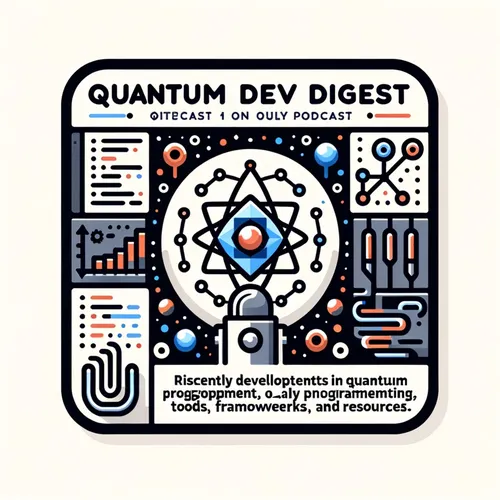Quantum Leap: Single Atom Logic Gate Redefines Computing Efficiency | Quantum Dev Digest
- Author
- Quiet. Please
- Published
- Wed 27 Aug 2025
- Episode Link
- https://www.spreaker.com/episode/quantum-leap-single-atom-logic-gate-redefines-computing-efficiency-quantum-dev-digest--67531388
This is your Quantum Dev Digest podcast.
Imagine flicking on a light switch and having it not just illuminate your room, but redefine the way we understand energy, information, and even reality itself. That’s the level of disruption we’re seeing in quantum computing right now. I’m Leo—the Learning Enhanced Operator—and today on Quantum Dev Digest, we skip the pleasantries because the news is just that electrifying.
Just days ago, researchers at the University of Sydney reported a breakthrough that’s reverberating through every corner of quantum science. For years, the biggest challenge in quantum computing hasn’t just been making qubits, those magical bits that can be both 0 and 1, but making them work together at a scale large enough for real impact. Adding more qubits doesn’t just get harder—it gets exponentially harder, thanks to error rates and hardware overhead. But what if we could do the work of dozens of qubits with a fraction of the parts?
Here’s the genius: the Sydney team, led by Leon Matsos and Arne Grimsmo, has constructed a quantum logic gate inside a single atom, leveraging what’s known as the Gottesman-Kitaev-Preskill, or GKP, code. They’ve dubbed this code the “Rosetta stone” of quantum computing, and for good reason. It translates messy, shaky quantum vibrations—picture an atom trembling in three directions at once—into crisp, digital-like states. This makes error correction dramatically more efficient. Think of it like compressing decades' worth of encyclopedias into a single hard drive. The information is all there, just encoded brilliantly.
To pull this off, Matsos entangled two quantum vibrations within one Ytterbium ion, essentially forcing two cymbals in a one-man band to hit the perfect note together every time. With this, they’ve built a universal logic gate—the fundamental building block for any programmable quantum computer—using just a single atom. Instead of an army of workers fumbling in a warehouse, you now have a single, super-skilled specialist handling the whole operation without breaking a sweat. That leap isn’t just incremental; it’s tectonic.
This discovery isn’t happening in isolation, either. Over the past week, we've seen a cascade of advancements: Google’s quantum processors simulating fundamental particle interactions, new hybrid quantum-classical AI accelerating manufacturing, and IBM pairing with AMD to build quantum-centric supercomputers. But the Sydney result stands out for one reason: it offers a clear path toward practical, scalable quantum computing, not in theory, but in real, testable hardware.
Why should you care? Imagine if powering an entire city took the same resources as running your kettle. That’s the promise here: massive leaps in efficiency, opening doors to new physics, uncrackable codes, and technologies we haven’t even dreamed up yet.
As we follow these quantum ripples, remember: in this field, reality can vibrate, entangle, and leap. We’re only scratching the surface, and the next chapter is unwritten.
Thank you for joining me, Leo, on Quantum Dev Digest. If you have questions or topics you want discussed, drop me a note at [email protected]. Make sure to subscribe, and remember, this has been a Quiet Please Production. For more, check out quiet please dot AI.
For more http://www.quietplease.ai
Get the best deals https://amzn.to/3ODvOta
